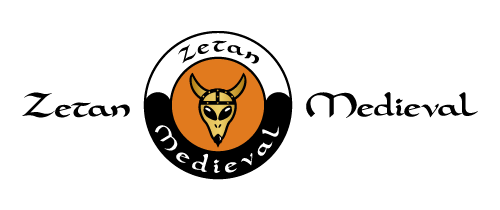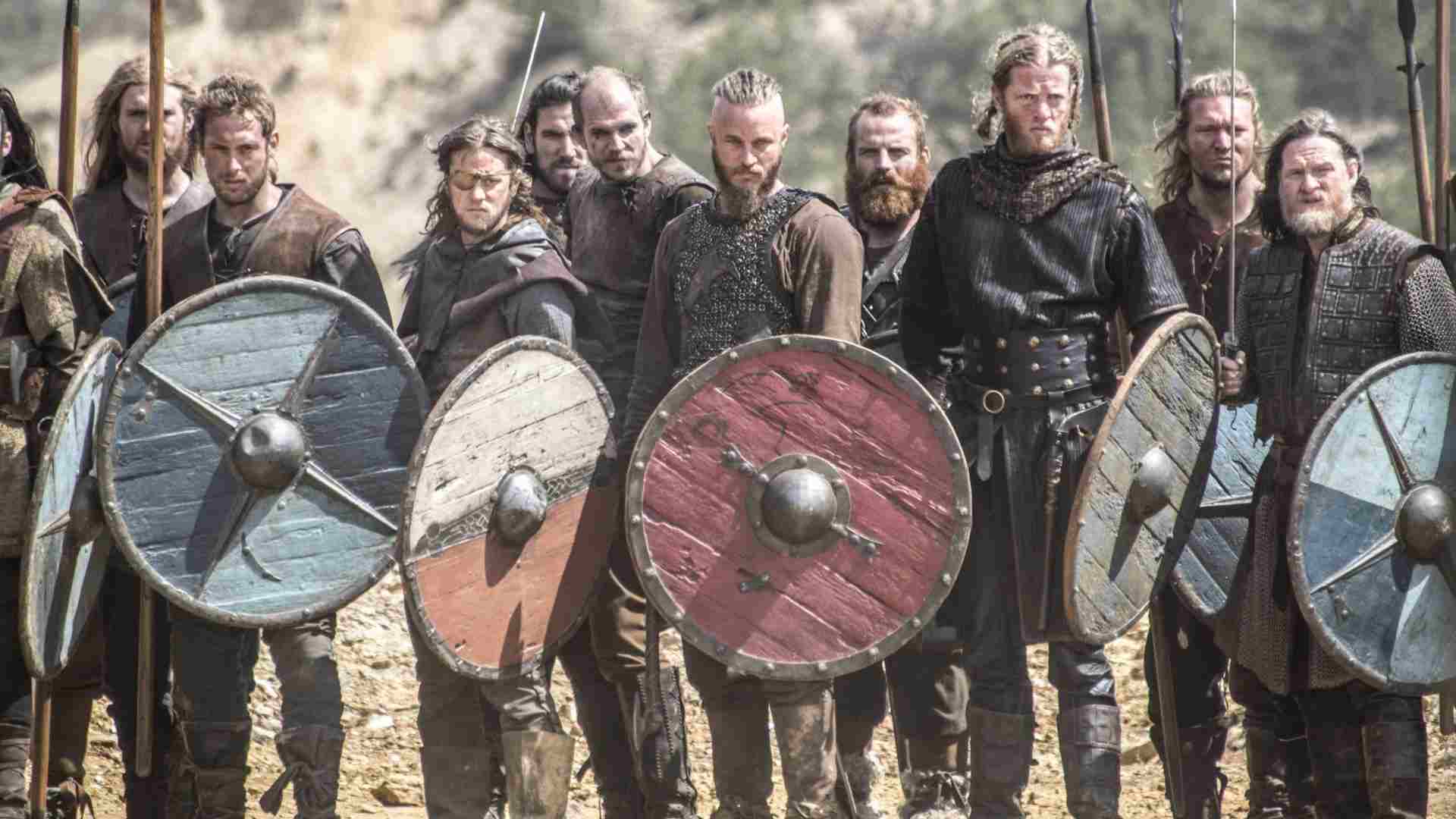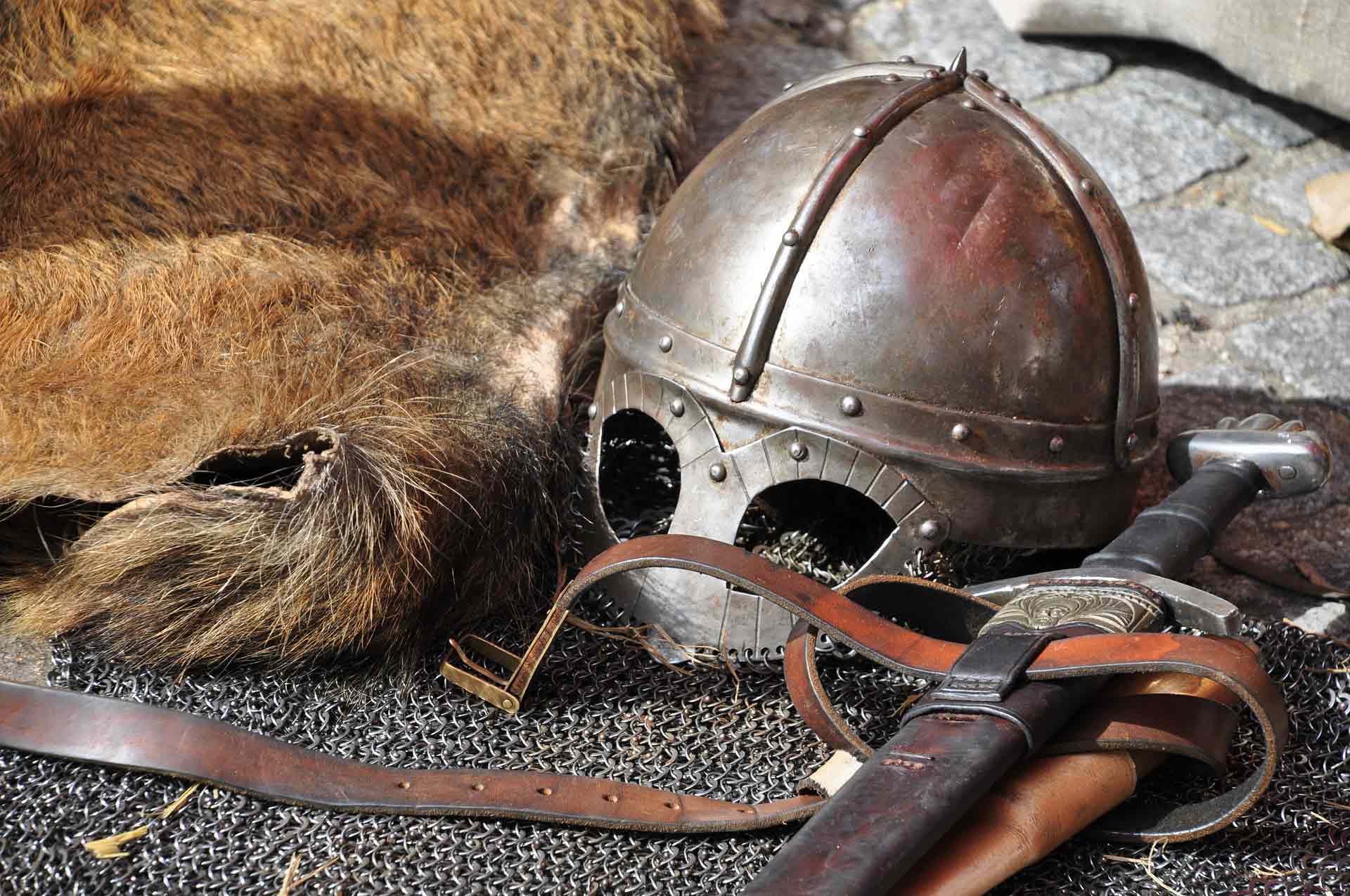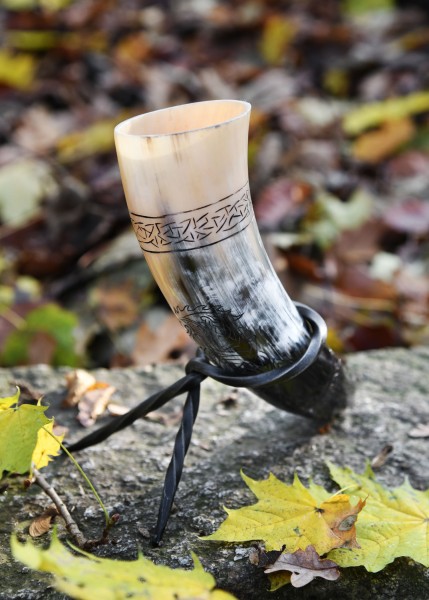Originally from Denmark, Norway, and Sweden, the Vikings were known for their ferocity. In their time everyone feared them and they hardly had any rivals. They established their temporal domain for 400 years, from 700 to 1100 AD in what was called the Viking Age. They were distinguished by their skill in handling weapons, as well as by the type of armor they wore. In their raids and establishments they caused a great influence in Europe, taking their influence to the Mediterranean regions.
It is necessary to emphasize that, although all the Vikings belonged to the Scandinavian region, not all the Scandinavians were Vikings. The Vikings were those who broke into other places across the sea in order to loot them. In contrast, non-Vikings traded normally with other nations. They were called the man of the North.
In the Viking Age, these fierce warriors attacked much of Europe, both coastal areas and inland areas, to the point that they established trade relations with the Byzantine Empire . His influence was special in Scotland, Great Britain, France and Ireland. As an example we will highlight that they founded Dublin, and established colonies in Normandy. They also extended their culture, very advanced for the time, in Greenland and Iceland, as a jump before colonizing North America, where Viking vestiges have been found, although the discussion is still open on the issue of the veracity and scope of the expeditions. Vikings in North American lands .
A myth that must be banished is that the Vikings wore helmets with horns, since an element of these characteristics would be a perfect hindrance when fighting. If they ever took them they would use them in solemnities . And another erroneous aspect that is attributed to these warriors is that they were rather ignorant and brute men, when the reality is that, as we said before, Scandinavian culture was very advanced.
With respect to these characters, many questions arise, one of them is where the word Viking comes from. And the debate between researchers appears again. One of them, Professor Peter Sawyer, defends the theory that the term Viking owes its origin to the Viken region , near Oslo, and as an explanation he explains that only the English referred to them as Vikings, the inhabitants of Viken , and England was the natural zone of the attacks of these warriors. Other towns that also suffered the attacks of the Vikings designate them with different names. Finally, Sawyer says that the Vikings themselves used the word Viking to indicate the expeditions they made with the aim of obtaining loot in other lands.
Scandinavian society was represented by three social classes: the aristocracy, the lower class, and perpetual slaves. It has been said that the Viking raids, many of them, their objective was to obtain slaves.
In Scandinavian society, women enjoyed much greater rights and freedoms than in the rest of Europe, and equality between the sexes begins to appear, albeit timidly. They were the priestesses of the gods, a profession closely linked to their condition as women, since the man had no role in religious matters. The marriages were closed by the men of the clan, without the woman having any intervention, but neither the man. The clothes and the adornments were similar for the man and the woman. Both men and women were in charge of making food for all the members of the family.
Most of the Scandinavians were farmers, but there were also a multitude of trades of all kinds, which made them practically self-sufficient in crafts of any kind. An important element in the Scandinavian trade was amber, whose surpluses were exported to the Romans or the Byzantines.
They were expert athletes, as well as having a passion for board games of all kinds. They practiced wrestling, swimming, mountaineering, etc. And among board games, chess and dice triumphed.
Another myth about the Vikings to be banished is that they were a filthy and cruel people, when in truth they were very real, they were quite elegant and dedicated a lot of time to hygiene and highlighting their appearance. Jewels and silks were common in high social groups.
The Norse gods were established at the beginning of the Bronze Age, due to the great displacements of the Germanic tribes to these northern lands. They believe in the end of time, and that the gods provide life to the individual, but then he is free to follow the straight path to salvation or choose the other extreme that will lead to damnation. Their gods were outdated. His life was over. For this reason, in addition to being fierce, they were great hedonists, who enjoyed their lives to the full, and pushed their family to follow their example. A well-known fact is that the warriors who died gloriously in battle reached Valhalla, together with the God Odin. The world was created by Odin, but it was not an eternal world but subjected to an end, whose day was unknown but which was called Ragnarök , the twilight of the gods. When Ragnarök arrives , Odin and his kindred gods fight against the forces of evil to preserve creation. But these are defeated and the universe burns completely and plunges into the primal waters. It is the end of the world, but not the end of existence, because another new world will be born out of the waters, so that the cycle is repeated without interruption. A few temples offered to the gods survive, plus most of the cult actions to these were done in nature itself. Norse mythology, not coinciding at all with the Christian religion, considered it a threat to their gods, so that Christians were a target to be beaten and in raids on Christian lands they had no hint of mercy with their inhabitants, treating them with extreme cruelty.
Between 4000 and 2300 BC the Vikings already knew how to build ships. They were small boats not very suitable for long sea voyages. They moved by the power of the oarsmen. Until the year 300/200 BC the construction of ships did not evolve, and this is due to the commercial relations established between the Romans and the Germanic peoples. They incorporate Roman technology into their ships. The first Viking ship with the power to glide through the sea with any degree of safety was called the Nydam . The ship still had no sail. Later they developed the keel and sail.
Long before this many Scandinavian traders settled permanently in Europe and converted to Christian culture. As a result, there is a separation between the pure Scandinavians and those who established colonies in Europe. The distance has its origin in religious differences. The Viking gods were many, and each one, let's say, had their powers, whereas Christianity preached a single omnipotent god . Some are inclined to affirm that the cruel way in which the Vikings punished the Christians was due to their religious controversies. Some raids attributed to the Vikings are not such, since their code of honor forbade killing civilians who did not carry weapons, and this often happened without those responsible being punished. The attack on Lindisfarne priory , involved the murder of all the monks and the total looting of the monastery. Nor in this case was the Viking code of honor applied. Given the ease with which it developed so easily , it spread the certainty that the Christian god did not protect his people.
The Viking raids in Christian communities, spread among the victims the idea that it was a punishment from God for their sins, were interpreted by European Christians as God's wrath on his people for their sins. Alfred the Great, tried to appease God, baptizing all the Vikings when he defeated them at the Battle of Eddington, forcing their conversion to the Christian faith. Charlemagne took a step forward, because in his military operations he destroyed the sacred places of the Scandinavians, in addition to forcing them to profess the Christian doctrine. This contributed in a decisive way so that the rejection of Christianity was installed in Scandinavian society. These actions of Charlemagne had their response in the ferocity with which the Scandinavians acted when they fought against the Christians.
At the origin of the Viking age, they always attacked by sea, and behaved as if they were pirates. They had great leaders. At first they were simple incursions, to later occupy land and form communities that mixed with the local population. Among the most notable leaders we highlight Eric the Red (d. 1003) and Leif Erikson (d. 1020). It is said that they were the first Europeans to reach Greenland and North America.
The Vikings never lost a battle, and their end cannot be attributed to any armed dispute. The most probable date for the disappearance of the Vikings is the year 1066, with the murder of Harald Hadrada , at Stamford Bridge. But this by itself would not explain its disappearance, another of the most important factors was the conversion to the Christian religion during the tenth and eleventh centuries of the Scandinavian peoples.
The contacts of the peoples that existed between them and the Vikings had a notable impact on the culture of these peoples, in innumerable aspects, especially in combat techniques and in the matter of the naval industry. Much has been written about the true reality of the Vikings, and throughout history numerous theories have been raised. At present they are considered as cultured and refined warriors, who, based on their religious beliefs, raided other territories in order to obtain loot, since they had nothing to lose and much to gain. However, when talking about Viking today, it is very common to think of warriors and great navigators. For 300 years they devastated other nations. Also, it is worth noting their other facet as explorers, colonizers and merchants.
The drum is a fundamental element in Viking culture. It is considered a sacred object, and was used by the noaidi (shaman) to communicate with the gods. Originally they were fishermen and hunters, they also developed an early iron industry with which they forged their own weapons. A feature worth mentioning and that no other people of that time had, is that the Vikings were a people of warriors and warriors.
The cornerstone of Viking society was the family. Relations between men were fraternal and polygynous marriages , that is, a man could have several wives, but women could only have one husband. Despite what you might think, the Vikings attached great importance to appearance. The decorations on their clothing, on their weapons and on their bodies were very common among them. They also took great care in tattooing their body. They had latrines and bathhouses. It was normal to have hot water in the houses, taking a bath once a week as a custom. In summer, cleaning was done in rivers and lagoons. The number of people that made up the family ranged from 7 to 40. In the house, the main part was a large space used for eating, chatting and sleeping. In this place the fire was always burning. Slaves also lived with the family, being these an essential part of the economy of Viking society. That is why in their raids in other lands they always captured slaves. Likewise, one could be a slave if the parents were slaves. In addition, you could go to that condition if you were not able to pay your debts to a family. If you were a slave it was very difficult to get out of that condition throughout your life. And even more, the slave-master relationship did not end with the life of the master, since the servants were killed in this case and buried with their master, so that they could serve them in the afterlife.
But if there is something special about the Viking people, it is their ability to build fast and strong ships. These ships allowed this people to dominate the seas. The wood used was pine, birch, oak and elm. In the final era of the Viking age these were dedicated to timber production. Such was the meticulousness with which they built their boats that their construction used to last 7 years.
The Viking people were undoubtedly a people of warriors. Children, from a very young age, were taught the handling of the weapons with which they trained every day. The Viking warrior's clothing consisted of skins of wild animals and helmets, which they used in fighting practices, and added shields and protections to them when entering battle. The reason why the Vikings began their raids on other territories was due to a rapid growth of their population. We have already said it, however, we will repeat it again, Viking women were also warriors and went to battle. Multiple warrior tombs have been found. They did not carry a shield and their weapons were especially axes, daggers and arrows.
The popular image of the Vikings does not correspond at all with reality . Neither horned helmets, nor dirty beards, nor rude postures when eating, have anything to do with the status of the Vikings. On the other hand, we cannot deny their barbarism in some raids either. Viking society was truly a diligent and prosperous society.













